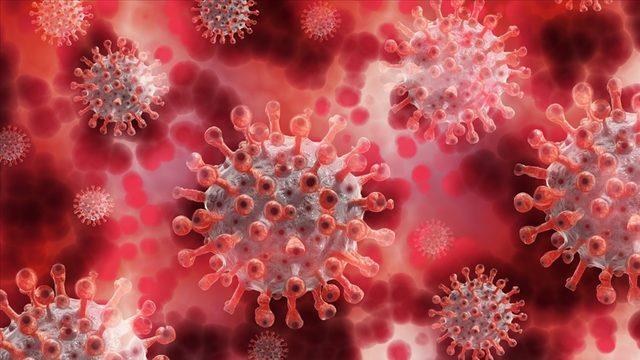The nightmare of Monkeypox is spreading. The news from Ankara today about the ‘M-pox virus’ that emerged in Africa and is spreading around the world caused concern. While it was claimed that 4 patients were quarantined in two hospitals in the capital on suspicion of Monkeypox, a statement was made by the Provincial Health Directorate. The statement denied the ‘quarantine’ claims.
Ankara City Hospital Infectious Diseases and Clinical Microbiology Specialist Prof. Dr. Rahmet Güner, who made evaluations about how dangerous the ‘Monkey Pox’ disease, which has caused the whole world to go into a state of alarm, is and who is at risk, used reassuring expressions.
Infectious Diseases and Clinical Microbiology Specialist Prof. Dr. Rahmet Güner answered questions about Monkeypox and explained that the virus (M-pox) was detected in monkeys in 1958.
Guner continued as follows:
THE FIRST CASE APPEARED 54 YEARS AGO
“The virus was first identified in monkeys sent to the laboratory for experimental purposes, so it was called monkeypox. It belongs to an old virus family, the ‘pox’ virus family. However, when we looked at it later, it was detected not only in monkeys but especially in rodents, and since the aim was to avoid directly stigmatizing a region or a species in the name, it was deemed more appropriate to call it ‘M-pox’ or ‘M-pox’ disease today. The first human case dates back to the 1970s.”
“MORTALITY RATE IS 1 IN A THOUSAND”
Prof. Dr. Güner explained that the virus has two subtypes:
“The mortality rate is lower in the West African type. The mortality rate is slightly higher in the Central African type, but when we look at people with good immune systems, the fatality rate (the mortality rate of those who catch a certain disease in a certain period) is around 1 in a thousand.
HOW TO PROTECT YOURSELF FROM MONKEYPOX VIRUS?
We need to learn how to protect ourselves from the disease. Here, close contact and long-term close contact come to the fore in terms of transmission. Therefore, paying attention to our personal hygiene and paying attention to the people we come into contact with seems sufficient to protect ourselves from the disease. Since this is a pandemic experience, we understand the concerns from society, but the situation is very different here. Therefore, the situation in a Covid pandemic will not be experienced here. Since people will show symptoms more clearly, especially due to rashes, the transmission will be less at this rate.

JUST PAY ATTENTION TO HYGIENE!
Emphasizing that contact precautions should be taken, Prof. Dr. Güner stated that attention should be paid to hand hygiene.
“Let’s pay attention to contact precautions. In particular, keeping a little distance from people who have a history of travel, rashes, and fever is actually enough for our protection. In this regard, unprotected and long-term sexual contact was the main cause of the transmission in 2022. Here, the situation seems a little different. We have the opportunity to confirm the diagnosis of the disease with a sample taken from the fluid in those rashes. With PCR diagnostic tests, it is possible to diagnose the disease when we send samples to the national virology laboratory and public health reference laboratory in our country. A limited number of cases were seen in our country between 2022-2023. It is not possible to claim that no cases will be seen today; of course, cases may be seen, but we will take our precautions and be protected.
SMALLPOX VACCINATION DETAIL! ATTENTION TO THOSE BORN AFTER 1980!
Those born before 1980 should be protected against smallpox because they are vaccinated. Therefore, there is a cross-protection here, it is possible to say that those vaccinated against smallpox are also largely protected against M-smallpox.”

IS THERE A VACCINE FOR M-POX?
Prof. Dr. Güner also gave information about vaccine and drug studies as follows:
“There is a vaccine recommended for limited groups. Maybe that will come to the agenda in time. It has an effective antiviral. But at this stage, that drug is not in a position to be used for everyone. Rather, symptom-oriented treatments come to the fore. If the patient has a fever, antipyretics, if they have pain, medications for muscle pain. There are antivirals available that are effective for these as well. A little more experience and knowledge is needed on this issue. There is no need to panic. The ministry is already conducting surveillance studies on infectious diseases. There is an M-smallpox vaccine abroad to be applied to limited groups, but we do not know whether it will come to the country or not. Also, everyone’s epidemiology and transmission characteristics are different. Therefore, a little more data is needed to address these issues.”

“IT CANNOT BE DEFINED AS SPECIFIC TO A GROUP”
Prof. Dr. Güner said that it is not right to see people traveling from Africa as risky and continued as follows:
“It is not right to label a group in general. The disease is seen in many regions and cannot be defined specifically for one group. Recognizing the risks and monitoring contacts would be the most accurate approach.”
(DHA)
